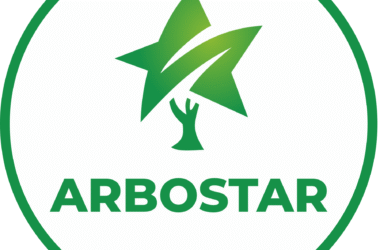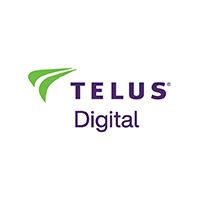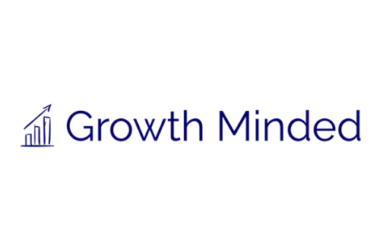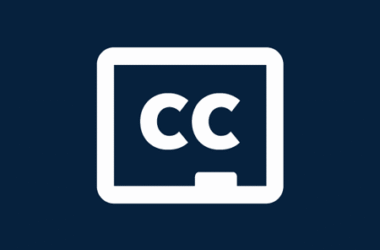As soon as I moderated this AI productiveness panel, I anticipated a secure dialog. What I didn’t anticipate was the flood of real-world insights, prone truths, and wise advice which may adjust to.
At Hubstaff, we’ve seen firsthand how AI can velocity up productiveness, nevertheless we moreover realize it doesn’t happen by magic. All through our AI Productiveness Shift panel, I had the chance to speak with 4 wise minds foremost the associated fee on AI, distant work, and organizational change:
Collectively, we unpacked what’s working, what’s not, and strategies to guide smarter, faster, and additional human-first with AI. Proper right here’s a recap of what stood out and what you presumably can act on correct now.
Favor to look at? Sooner than we dig into the takeaways, you presumably can catch the overall panel dialog proper right here.
Want the overall data behind this dialog? Get hold of the AI Productiveness Shift report again to find the stats, developments, and insights shaping how teams are using AI at work.
Enhance your employees’s effectivity with Hubstaff’s productiveness devices
1. The utilization gap is precise, and it’s not a tech downside
Certainly one of many headline stats from our evaluation: 85% of execs say they’re using AI, nevertheless solely 4% of their exact time is spent using it. That’s an unlimited disconnect.
As Dr. Gleb put it, the issue isn’t entry, it’s consciousness. Most people don’t know they’ll swap fashions in ChatGPT or create custom-made copilots expert on inside templates. They’re poking spherical in the dark with out a flashlight.
And as Nadia added, governance and compliance fears (significantly in regulated areas identical to the EU) are making firms hesitant to go deeper. They’re unsure about how data is saved, who has entry, and what’s actually compliant.
Takeaway: Start with coaching. Apply your employees in wise use circumstances. And assemble confidence with clear, role-based AI utilization insurance coverage insurance policies that embrace precise examples of what’s impressed and what’s not.
2. Concern is the quiet killer of innovation
One issue that principally struck me: concern is doing additional hurt than we discover.
Eryn spoke about how firms ship mixed messages, first warning employees to not use AI, then flipping to say all people must undertake it. That type of whiplash leads to confusion and resistance. Phil added a truth I hadn’t thought-about sooner than: some employees don’t have to share their AI workflows because of it reveals an extreme quantity of about how they work, or what they’re automating and augmenting.
It’s a visibility downside and a psychological safety downside.
Takeaway: Foster a convention of curiosity. Rejoice experimentation. Make AI seen, not secret. One resolution to start? Run an “AI Week” downside internally the place teams present how they’re using AI to reinforce workflows.
3. Embedding AI into workflows unlocks precise have an effect on
This was my favorite part of the panel, when precise examples bought right here to life.
Nadia shared how she helped a startup consolidate scattered data from a lot of devices and automate core enterprise processes using AI. The result? Massive time monetary financial savings and clearer focus all through teams.
Eryn talked just a few small consulting company that constructed custom-made brokers to automate aggressive analysis. What used to take weeks now takes hours, they often’re closing gives that after felt out of attain.
Takeaway: Don’t start with “AI use circumstances.” Start with broken workflows. The place are your teams drowning in handbook duties or research-heavy processes? That’s your AI different.
4. Let your employees lead
I was truly impressed by how Dr. Gleb’s technique flips the usual narrative. In its place of mandating one AI machine or workflow, he trains teams on strategies to make use of AI efficiently and lets them assemble their very personal copilots.
At one insurance coverage protection agency, claims brokers created their very personal Copilot brokers to automate protection letters. Administration picked the right one, scaled it, and acquired massive time monetary financial savings all through the board.
Takeaway: Permit your employees to assemble what works for them. Give all people foundational teaching, encourage exploration, and let the right ideas flooring organically. That’s how innovation scales.
5. AI is forcing us to redefine productiveness
Proper right here’s the place points purchased precise. We shared some hanging stats from our survey:
- 77% of people say AI reduces job time
- 70% say it can improve focus
- 45% report an enormous improve in productiveness
Nonetheless what does “productiveness” even indicate anymore?
Nadia challenged the idea that staying late on the office = productiveness. It’s not about seen effort, it’s about vital outcomes. Phil emphasised that AI ought to provide us additional time to focus on the proper points, not merely additional points. And Dr. Gleb cautioned that AI is, truly, rising workload, so the bar is rising whether or not or not we desire it or not.
Takeaway: Shift your metrics. Switch from measuring train to measuring outcomes, tempo, and effectiveness. Don’t punish employees for using AI to work smarter.
6. Hiring, teaching, and salaries are all altering fast
One stat that caught all people’s consideration: 20% of firms are already adjusting salaries based on AI experience.
Eryn known as out the need to rethink hiring absolutely. The half-life of experience is shrinking, so we’re capable of’t merely take a look at job titles and ranges anymore. We’ve to value lifelong learners, curiosity, and adaptability.
And as Dr. Gleb confirmed, firms need clear insurance coverage insurance policies that state AI is meant to reinforce not change people. That builds perception and drives smarter adoption.
Takeaway:
- Add AI fluency to effectivity critiques and hiring conversations
- Reward experimentation and adaptability
- Create insurance coverage insurance policies that empower, not police
7. Why small teams switch fast and the best way large ones can catch up
Small teams are profitable with AI because of they’ll act fast, take risks, and course-correct shortly. Phil described the cultural gap fully: in startups, “switch fast and break points” is impressed. In large enterprises, “take a risk and likewise you’ll get fired” is the unspoken rule.
Nonetheless large firms aren’t doomed. Eryn pointed to Accenture’s inside AI app market as an unbelievable occasion of balancing administration with empowerment.
Takeaway: Create your particular person inside AI market or sandbox. Give employees a certified resolution to experiment and share devices with out triggering months of crimson tape.
8. What AI will change for each of us subsequent 12 months
We closed the session by asking: What’s a way AI will have an effect on your work throughout the subsequent 12 months?
Proper right here’s what the panelists acknowledged:
- Phil is using AI to help personal writing initiatives and automate e-mail workflows
- Nadia is using AI to determine compliance patterns all through firms and create faster audits
- Eryn is shifting from “creator” to “curator,” lowering by the noise to flooring worthwhile insights
- Dr. Gleb is using AI devices to indicate himself, be taught platform updates, and tailor learning to his buyers’ use circumstances
As for me? I’m centered on creating home for these conversations to keep up occurring because of AI is just as extremely efficient as a result of the people driving it.
Takeaway: Ask your self what one area of your work may be faster, less complicated, or smarter with AI? Start there.
Closing concepts: AI’s true price comes from people
Moderating this panel stroke a chord in my memory of 1 factor straightforward nevertheless extremely efficient: AI works best as soon as we maintain it human.
Apply your teams. Assemble curiosity. Give consideration to outcomes. Automate what doesn’t matter and defend what does. The teams that win acquired’t merely use AI. They’ll use it properly.
Thanks as soon as extra to our panelists, our viewers, and to all people attempting to steer this shift with intention and coronary coronary heart.
Let’s assemble smarter collectively.
Favor to look at? Sooner than we dig into the takeaways, you presumably can catch the overall panel dialog proper right here.
Want the overall data behind this dialog? Get hold of the AI Productiveness Shift report again to find the stats, developments, and insights shaping how teams are using AI at work.
Source link







